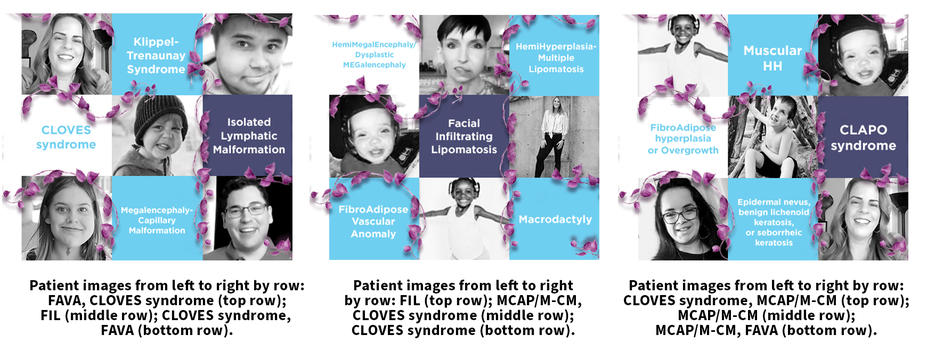Different conditions, one root cause: PIK3CA mutations
Many conditions share the same common cause—PIK3CA mutations. As a result, these conditions are being classified as PIK3CA-Related Overgrowth Spectrum, or PROS.
KTS (Klippel-Trenaunay Syndrome)
CLOVES syndrome (Congenital Lipomatous Overgrowth, Vascular malformations, Epidermal nevi, Scoliosis/skeletal and spinal)
ILM (Isolated Lymphatic Malformation)
MCAP or M-CM (Megalencephaly-Capillary Malformation)
HME (HemiMegalEncephaly)/DMEG (Dysplastic MEGalencephaly)/Focal cortical dysplasia type II
HHML (HemiHyperplasia-Multiple Lipomatosis)
FIL (Facial Infiltrating Lipomatosis)
FAVA (FibroAdipose Vascular Anomaly)
Macrodactyly
Muscular HH (HemiHyperplasia)
FAO (FibroAdipose hyperplasia or Overgrowth)
CLAPO syndrome (Capillary malformation of the lower lip, Lymphatic malformation of the face and neck, Asymmetry of the face and limbs, and Partial or generalized Overgrowth)
Epidermal nevus, benign lichenoid keratosis, or seborrheic keratosis
Other conditions may be identified and characterized as PROS. Talk to your doctor to find out if your condition is a PROS condition

